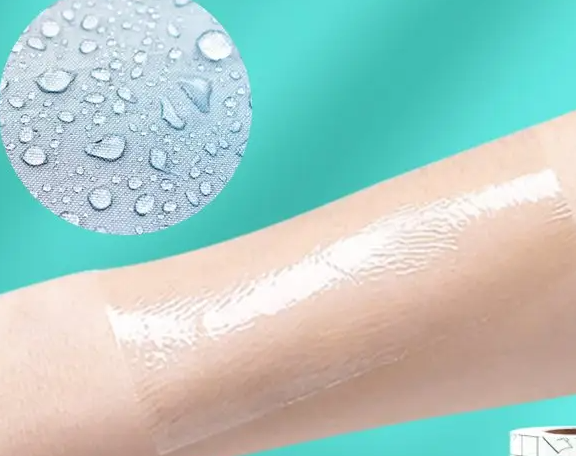In today’s rapidly advancing medical technology, a polymer material called thermoplastic polyurethane (TPU) is quietly sparking a revolution. The TPU film of Yantai Linghua New Material Co., Ltd. is becoming an indispensable key material in high-end medical device manufacturing due to its excellent performance and biocompatibility. Its presence is everywhere, from traditional infusion bags to cutting-edge wearable health devices.

1) Core feature: Why does the medical industry favor TPU?
TPU film is not an ordinary plastic film. It combines the elasticity of rubber with the strength of plastic, providing unprecedented flexibility for medical device design.
-Excellent biocompatibility and safety: Medical grade TPU strictly adheres to biocompatibility standards such as ISO 10993, ensuring no sensitization or non-toxic reactions when in contact with human tissue or blood, greatly reducing patient risk.
-Excellent mechanical performance: TPU film has high tensile strength (usually>30 MPa), extremely high elongation at break (>500%), and excellent tear resistance (>30 kN/m), making the instrument extremely durable and able to withstand repeated stretching, bending, and compression without damage.
-Moisture and air permeability: The porous or hydrophilic properties of TPU film allow water vapor to freely pass through while blocking liquid water and bacteria. This is crucial for wound dressings and surgical protective clothing, which can keep the skin dry, promote healing, and enhance the comfort of medical staff.
-Excellent soft touch and transparency: TPU film has a soft texture, providing a comfortable and seamless fit to the human body; Its high transparency facilitates medical staff to observe the infusion process or wound healing.
-Sterilizability: TPU film can withstand various sterilization methods, including ethylene oxide (EO), gamma rays, and electron beams, ensuring the sterility and safety of end products.
2) Application scenario: From “invisible” guardianship to the forefront of intelligence
These characteristics of TPU film make it shine in the medical field:
-Infusion and drug delivery system: As the inner and outer layer material of high-end infusion bags, nutrition bags, and peritoneal dialysis bags, TPU’s flexibility and rub resistance ensure the stability of the drug solution during transportation and use, and its transparency facilitates liquid level observation.
-Wound care and dressings: New waterproof and breathable dressings and negative pressure wound therapy (NPWT) systems extensively use TPU film. It can effectively isolate external pollutants and expel moisture from the wound, creating an ideal environment for wound healing.
-Surgical protective products: used to manufacture breathable and antibacterial layers for surgical drapes, isolation gowns, and protective clothing, providing critical protection while solving the pain points of traditional non-woven fabric products being stuffy and uncomfortable.
-Innovative medical devices: TPU film has become a key component in interventional devices such as drug balloon catheters and artificial heart assist devices due to its excellent blood compatibility and flexibility. In addition, in wearable medical devices such as smart patches, TPU film serves as the substrate in direct contact with the skin, ensuring the comfort and long-term reliability of the device.
3) The cornerstone of quality: key parameters and testing standards
To ensure that every batch of TPU film meets stringent medical requirements, we refer to a series of international standards that form the cornerstone of its quality:
-Mechanical properties:
Tensile strength and elongation at break: The commonly used standard ASTM D412 ensures that the film has sufficient strength and elasticity.
Tear strength: The commonly used standard ASTM D624 measures its ability to resist tear propagation.
-Biocompatibility: Must pass ISO 10993 series standard testing, which is a mandatory requirement for medical device marketing authorization.
-Barrier performance:
Moisture Transmittance Rate (WVTR): Standards such as ASTM E96 quantify its water vapor permeability, with higher values indicating better air permeability.
Liquid barrier properties: standards such as ASTM F1670/F1671 (used to test resistance to synthetic blood and virus penetration).
-Physical characteristics:
Hardness: ASTM D2240 (Shore hardness) is commonly used, and medical grade TPU is typically between 60A and 90A to maintain flexibility.
Future Outlook: A New Chapter in Intelligence and Sustainable Development
4) Looking ahead to the future, the development prospects of TPU film in the medical field are broad and clear:
-Intelligent integration: In the future, TPU films will be more deeply integrated with microelectronics and sensors to develop “intelligent films” that can monitor physiological parameters such as heart rate, blood sugar, and sweat composition in real time, promoting the development of personalized medicine.
-Biodegradable TPU: With the increasing awareness of environmental protection, the development of TPU materials that can be controlled to degrade or absorbed by the human body in vivo will become the core direction of the next generation of implantable devices, such as absorbable vascular stents and tissue engineering stents.
-Functional surface modification: By endowing TPU films with antibacterial, anticoagulant, or actively promoting cell growth capabilities through surface technology, its application in high-end implants and complex wound treatment will be further expanded.
Yantai Linghua New Material Co., Ltd. believes that TPU film has grown from a ‘substitute material’ to an ‘empowering material’. Its unique performance combination is unlocking new dimensions of medical device innovation. We are currently in a golden age of medical progress driven by materials science, and TPU is undoubtedly one of the stars of this era. ”
Post time: Oct-09-2025
